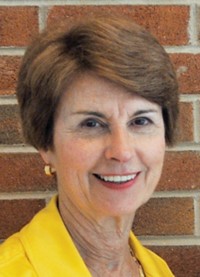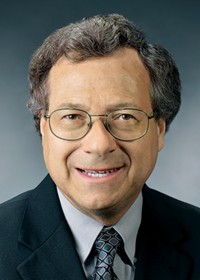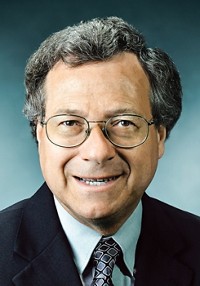Advertisement
Grab your lab coat. Let's get started
Welcome!
Welcome!
Create an account below to get 6 C&EN articles per month, receive newsletters and more - all free.
It seems this is your first time logging in online. Please enter the following information to continue.
As an ACS member you automatically get access to this site. All we need is few more details to create your reading experience.
Not you? Sign in with a different account.
Not you? Sign in with a different account.
ERROR 1
ERROR 1
ERROR 2
ERROR 2
ERROR 2
ERROR 2
ERROR 2
Password and Confirm password must match.
If you have an ACS member number, please enter it here so we can link this account to your membership. (optional)
ERROR 2
ACS values your privacy. By submitting your information, you are gaining access to C&EN and subscribing to our weekly newsletter. We use the information you provide to make your reading experience better, and we will never sell your data to third party members.
People
ACS Award For Achievement In Research For The Teaching & Learning Of Chemistry
Sponsored by Pearson Education
by Cheryl Hogue
January 24, 2011
| A version of this story appeared in
Volume 89, Issue 4
David F. Treagust wishes he had had more effective instructional methods when he taught chemistry at secondary schools in England and Australia.
“I can remember those occasions where my very best efforts resulted in 30% of the students getting a 20% on an exam. I thought, ‘What have I been doing? These kids are bright, but they’re not doing very well,’ ” says Treagust, 67, a professor of science education at Curtin University, in Perth, Australia. “I thought, ‘Students aren’t doing their homework.’ But it could well have been me not recognizing how to teach in a more effective manner.”
More than 35 years ago, Treagust left school teaching to earn a doctorate in science education and environmental science at the University of Iowa. “It seemed like a natural progression to go from being a teacher of chemistry to looking at how teachers teach chemistry and how students learn chemistry,” he says.
Since then, he has investigated what makes for better chemistry instruction. Treagust and his collaborators have developed approaches that teachers can implement to prevent, diagnose, and correct students’ misunderstandings about chemistry. These methods include the use of models and diagrams to provide more effective teaching and learning of chemistry concepts.
Treagust has also delved into ways teachers can help students overtly connect the various representations of chemical concepts. For example, this might involve the links among visible phenomena such as color or pH changes; molecular representation of atoms, molecules, and ions; and chemical symbols, formulas, structures, and equations.
“In my opinion, there is no other science educator who has done more to investigate students’ understanding of chemistry content knowledge and chemistry instructors’ methods of teaching of chemistry than David Treagust,” says Thomas J. Greenbowe, a professor of chemistry and associate coordinator of general chemistry at Iowa State University. “Dr. Treagust’s research papers have been highly influential in shaping not only my thinking and my graduate students’ thinking about chemical education, but many others’ as well.”
Work by Treagust and colleagues has led Greenbowe to change how he teaches. For instance, in the past, Greenbowe covered the subject of electrochemical cells only by “a straight lecture of the facts.”
An oft-used classroom example in this area involves an electrode of zinc in a solution of zinc sulfate and a copper electrode in a copper sulfate solution. When the size of the electrodes is doubled, the voltage—or electromotive force—remains the same. But Treagust and his colleagues found that even after students received traditional instruction on this concept, many believed that the voltage would double as the electrode size is doubled. The group then designed methods to improve teaching about electrochemical cells and overcome misunderstandings about the devices’ behavior.
Inspired by the Treagust group’s methods, Greenbowe switched to a guided-inquiry approach for this subject. Greenbowe now asks his students as a group to predict voltage when electrode size is doubled. Next, he conducts a demonstration with a meter showing voltage before and after electrode size is doubled. The students then gather in small groups in the lecture hall to discuss and answer questions on electrochemistry that were developed by Treagust and his collaborators.
These methods, Greenbowe says, have significantly improved his students’ overall understanding of electrochemistry.
Treagust will present the award address before the ACS Division of Chemical Education.






Join the conversation
Contact the reporter
Submit a Letter to the Editor for publication
Engage with us on Twitter